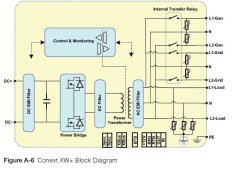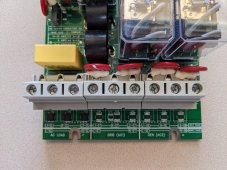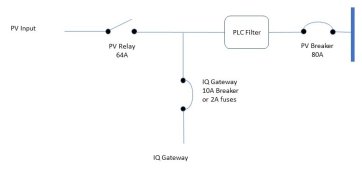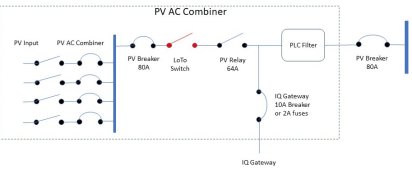Update on AC coupling IQ8's
All single IQ8+ inverter testing was done without any PLC communications between the IQ8 and the IQ gateway, it was switched off.
Here is a block diagram for the XW+ or XW Pro inverter:
View attachment 141896
Look at the AC EMI filter on the backup load side where the micro-inverters would be AC coupled to!
View attachment 141897
Now check this out, bottom left, 3 AC Load 4.7nf 250V capacitors, from L1, N and L2 to GND!
This will attenuate or kill weak PLC carrier communications!
What could be done?
1) de-solder the capacitors, but there is more EMC filtering downstream, have not fully reverse-engineered the full drawing for the AC relay board. May void warranty, invalidate ETL/UL listing and/or FCC EMI noise filtering rules.
2) Redesign the AC relay board and change the symmetric EMI filtering to asymmetric PLC style filtering.
3) use a directional PLC line filter
View attachment 141900
If you have access to other inverters, please check the EMI filter on the line where AC coupling with Enphase is done.
Maybe the AC batteries that can be successfully AC coupled with Enphase have directional PLC style EMI filters!






